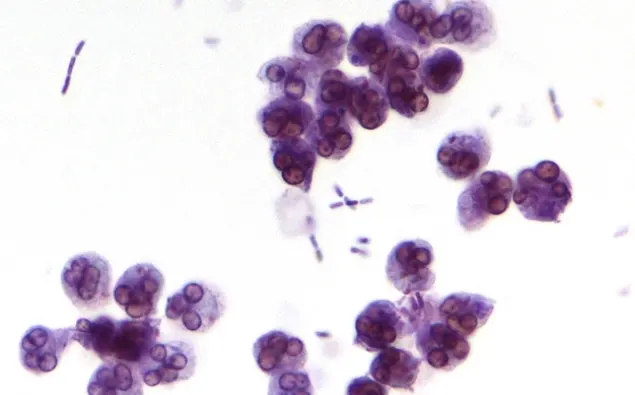
In the Literature
Fulton EA, Weir W, Czopowicz M, McBrearty AR. The relationships between sediment findings and culture results and the presence of proteinuria in canine urine samples. J Small Anim Pract. 2023;64(12):749-758. doi:10.1111/jsap.13669
The Research …
Although reported associations between urine sediment changes and urine protein:creatinine ratio (UPC) and presence of proteinuria are weak or absent, the assumption that active urine sediment causes proteinuria may lead to the clinical decision to not assess UPC, which can result in significant proteinuria being missed.1,2
This 2-part retrospective study was designed to assess the relationship between urine sediment and culture results and presence of proteinuria in canine urine samples, then evaluate proteinuria as active sediment and positive culture resolved. Records of dogs with urine obtained via cystocentesis for urinalysis (including UPC) and concurrent urine culture were evaluated. Hematuria was defined as >5 RBCs per high-power field; pyuria was defined as >5 WBCs per high-power field. Visualization of micro-organisms on sediment examination was considered a positive result.
Of 491 dogs that met the inclusion criteria for the first part of the study, 39.1% were proteinuric (UPC, >0.5). Active sediment was the only variable significantly associated with proteinuria; however, only 49.5% of samples with active sediment had proteinuria. Thirty dogs from the first part of the study met the inclusion criteria for the second part of the study (ie, ≥1 follow-up urine sample collected via cystocentesis for urinalysis after 7-56 days). Resolution of active sediment or positive urine culture was not significantly associated with reduction in UPC or frequency of proteinuria.
… The Takeaways
Key pearls to put into practice:
Although active sediment was associated with proteinuria in this study, 50.5% of samples with active sediment did not meet the criteria for proteinuria. In addition, resolution of active sediment or positive culture was not significantly associated with reduced proteinuria or UPC in dogs.
Misinterpretation of proteinuria due to inflammation, presence of organisms, and/or hematuria can result in the true etiology of proteinuria being overlooked, thus delaying diagnosis and treatment and possibly adversely affecting prognosis.
You are reading 2-Minute Takeaways, a research summary resource proudly presented by Clinician’s Brief. Clinician’s Brief does not conduct primary research.